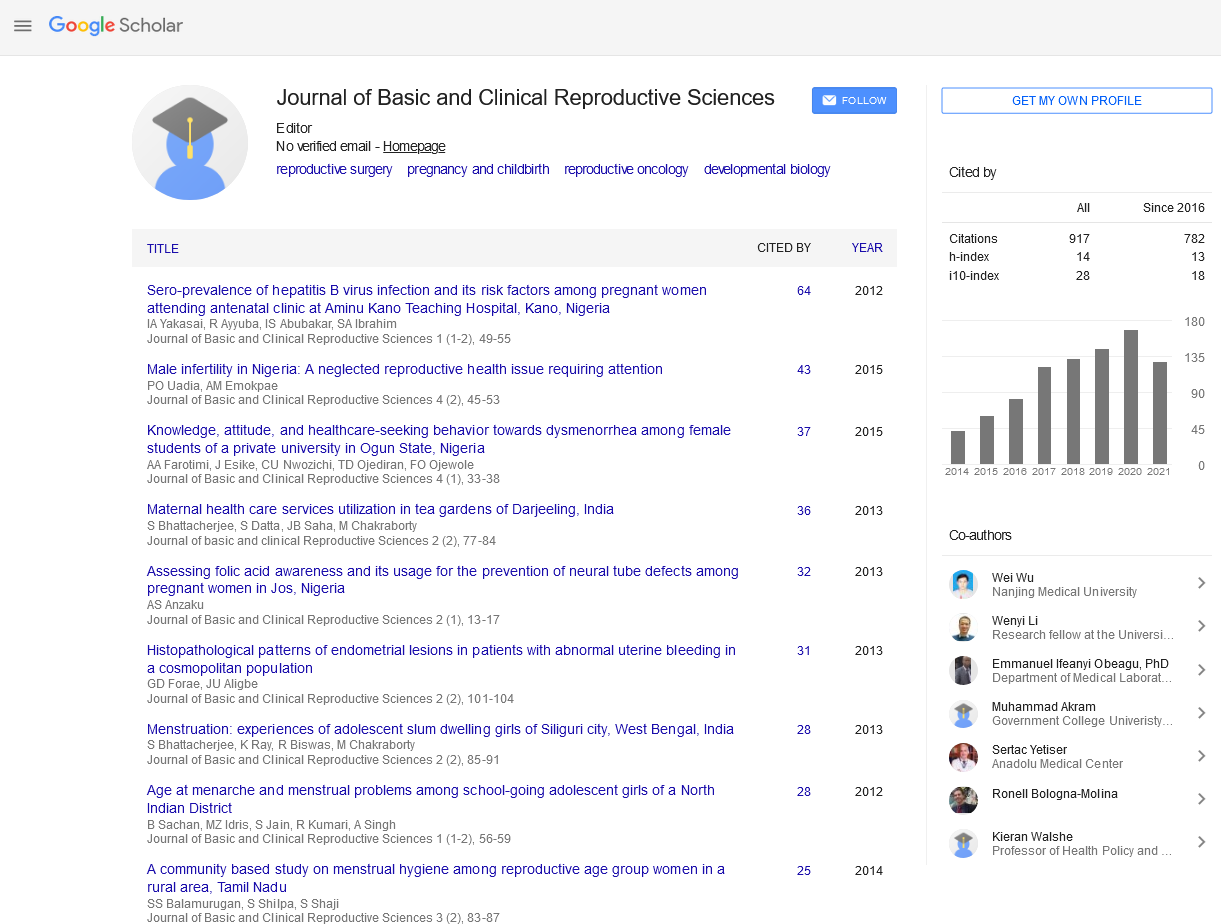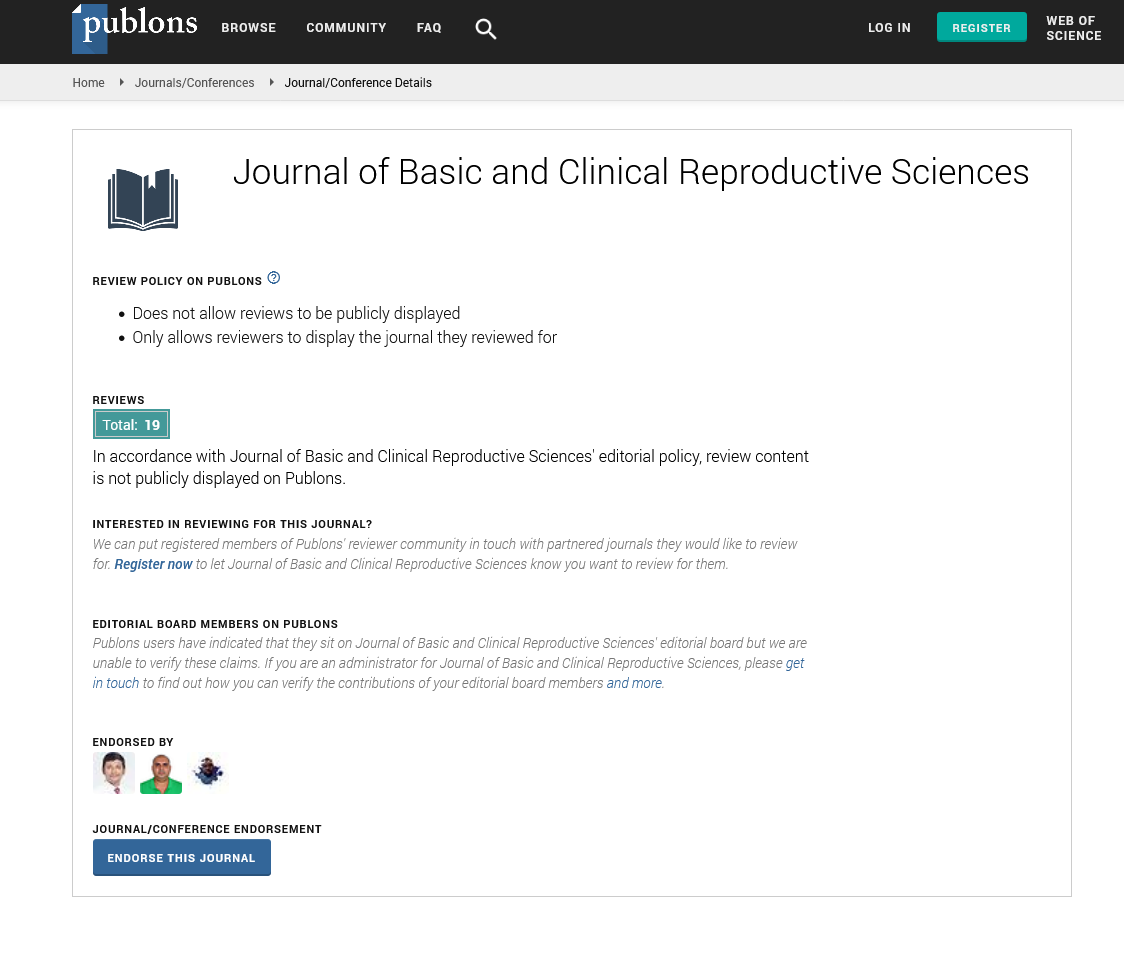Editorial - Journal of Basic and Clinical Reproductive Sciences (2021) Volume 10, Issue 6
Analysis for Microbiology of the Infections of Patients
Received: 02-Jun-2021 Accepted Date: Jun 15, 2021 ; Published: 22-Jun-2021
This open-access article is distributed under the terms of the Creative Commons Attribution Non-Commercial License (CC BY-NC) (http://creativecommons.org/licenses/by-nc/4.0/), which permits reuse, distribution and reproduction of the article, provided that the original work is properly cited and the reuse is restricted to noncommercial purposes. For commercial reuse, contact reprints@pulsus.com
Introduction
The microbiology of the infections of patients in this analysis was generally similar to that reported by other investigators. Bacteria that colonize the gastrointestinal tract in high concentrations are typically responsible for intraabdominal infections. Species of the B. Fragilis group and E. coli are present in most, if not all, cases (even if they are not recovered due to their presence in low numbers); and peptostreptococci, Enterobacteriaceae and enterococci are also commonly encountered. The microbiology of complicated skin/skin–structure infections is related to the location of the infection. S aureus can colonize the skin over the entire body and, therefore, is the predominant pathogen. Peptostreptococci are also frequently isolated, and abscesses in the perineal area often contain B. Fragilis group species and Enterobacteriaceae. The microbiology of acute pelvic infections reflects the normal flora of the cervical canal. The predominant pathogens are Prevotella bivia, Prevotella disiens, peptostreptococci, Enterobacteriaceae and group B streptococci. Ertapenem is rapidly bactericidal against most of the predominant intra–abdominal, skin/skin–structure and pelvic pathogens, including many Enterobacteriaceae that produce extended–spectrum or AmpC β–lactamases22 and are, therefore, resistant to third–generation cephalosporins and β–lactam–β–lactamase inhibitor combination agents. Ertapenem, on the other hand, has limited activity in vitro against enterococci, which are encountered commonly in polymicrobial intra–abdominal and pelvic infections and less often in polymicrobial skin/skin–structure infections.
Clinical assessments were made at enrolment, daily thereafter while on study therapy, and at pre–specified intervals post–therapy, as defined previously. Additionally, the evaluability of patients with intra–abdominal infection took into account the adequacy of the initial surgery, as determined by a blinded panel of surgeons. Cultures were collected at baseline from the site of infection. If clinically indicated, blood cultures were also performed. All isolates were identified at the site laboratory, and aerobic pathogens were tested for susceptibility to ertapenem and piperacillin–tazobactam following the guidelines of the NCCLS.11 In addition, study sites outside the USA sent a duplicate clinical sample to a central laboratory (R. M. Alden Research Laboratory, Santa Monica, CA, USA) for culture and susceptibility testing of anaerobes.
This analysis is based on patients from the three studies whose baseline cultures grew two or more pathogens that could be classified by the site laboratory as aerobic or anaerobic bacteria. Fungi and bacteria not specified as aerobic or anaerobic (e.g. Gramnegative bacilli, aerobic Gram–variable bacillus and unspecified bacteria) were excluded from the analysis. For this analysis, polymicrobial infections were categorized as being composed of aerobic bacteria only, anaerobes only or mixed aerobes and anaerobes. The Microbiological Modified Intent–To–Treat (MITT) population included patients who received one or more doses of study therapy, met the minimum disease definition, had two or more relevant pathogens isolated at baseline, regardless of susceptibility to study drugs, and had a microbiological response assessed. The microbiologically evaluable population was a subset of the microbiological MITT population for whom information was sufficient to determine outcome at the TOC assessment, one or more baseline pathogen was susceptible to both study antimicrobials and a microbiological response was assessed. The primary efficacy population in this analysis was the microbiologically evaluable population.
Copyright: © 2021 LB Reller. This is an open-access article distributed under the terms of the Creative Commons Attribution License, which permits unrestricted use, distribution, and reproduction in any medium, provided the original author and source are credited.


